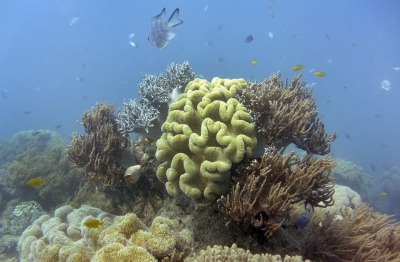
Once a natural coral reef is disturbed due to human activity like shipping, whaling, diving and warming of water, it lies in rubble at the bottom of the sea. Locals and tourists use heavy nets, dive and walk on the seabed, and fishermen use dynamite to bring out the fish. Indonesia has banned all these activities but people do not bother about the ban. The seabed is disturbed by strong storms and waves, and the coral rubble is shifted about, making regeneration impossible.
Biorocks help fishermen
And it’s not just coral that improves: the biorocks have helped the fish populations as well, particularly lobster and juvenile fish which take shelter in the structures.
Scientists have noted better biodiversity and improvement in water quality in places where biorocks have been installed. They have also helped turn the tide when it comes to severe erosion of beaches. Biorocks act as barriers to the fast incoming waves, and stop the waves from taking away the sand (erosion). The sand is deposited on the seashore because of the biorock barrier. Some parts of the beach in Indonesian islands have expanded by 15 metres in a few years. And biorocks have resisted damage by natural disasters such as the Asian Tsunami of 2004. This is because their open frameworks allow large waves to pass through.
Picture Credit : Google
